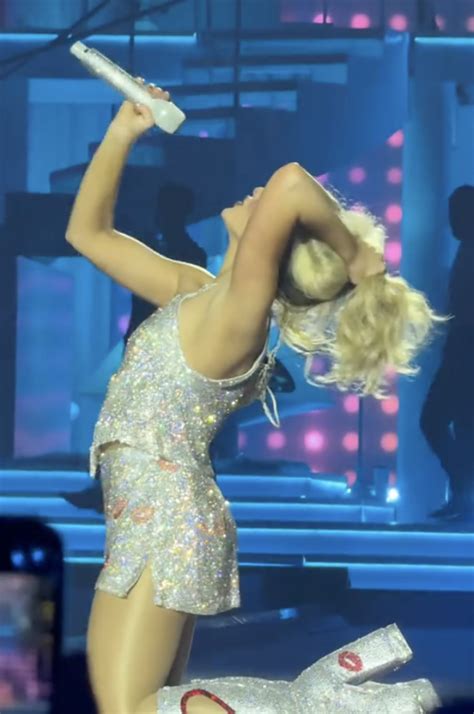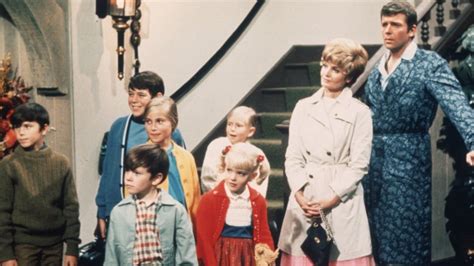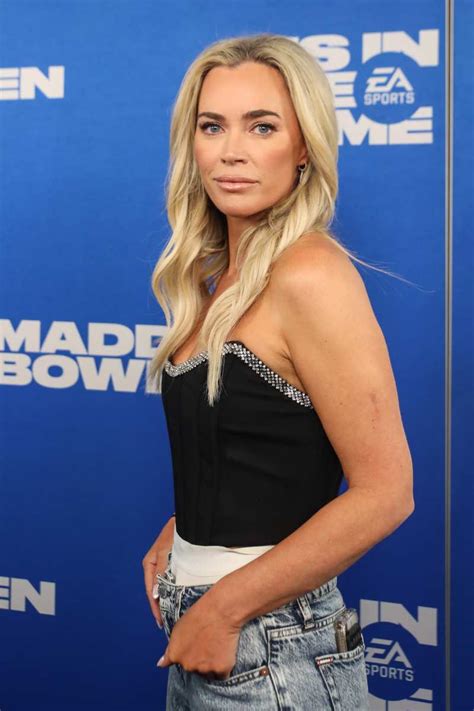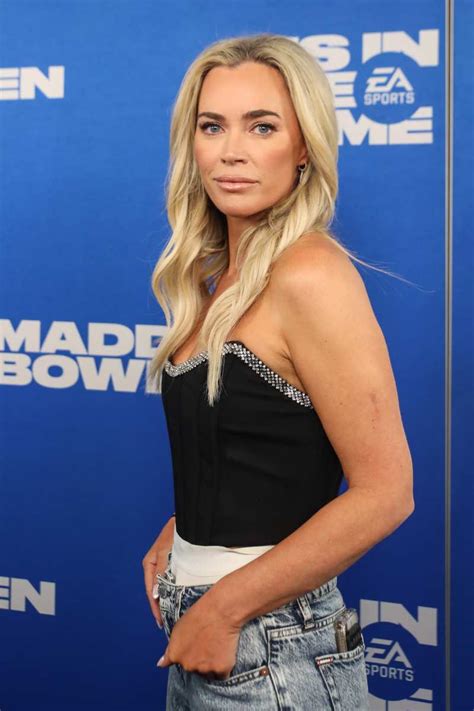
Sabrina Carpenter’s upcoming album, “Short n’ Sweet,” is already generating buzz, not just for its music, but for the controversial artwork accompanying its lead single, “Espresso.” The imagery, featuring Carpenter posing with a dog and sporting a suggestive expression, has ignited a debate online, with some critics accusing the pop star of catering to the male gaze. Carpenter, however, remains unbothered by the backlash, stating plainly, “I can not give a f*** about it.”
The controversy stems from the perceived sexualization of Carpenter in the promotional material. Critics argue that the pose and overall aesthetic contribute to a long-standing pattern of objectifying women in the music industry. Social media platforms have been flooded with comments dissecting the image, with many users expressing disappointment and accusing Carpenter of pandering to a male audience for commercial gain. Some argue that the image detracts from her musical talent and reinforces harmful stereotypes.
Carpenter, however, has dismissed these criticisms, asserting her right to artistic expression and challenging the notion that female artists should be constrained by societal expectations. In an interview, she addressed the controversy directly, stating her lack of concern for the negative reactions. This unapologetic stance has further fueled the debate, with supporters applauding her confidence and independence, while detractors remain unconvinced.
The controversy surrounding Sabrina Carpenter’s album art highlights a larger conversation about female agency, sexualization, and the role of women in the entertainment industry. It raises questions about the line between empowerment and objectification, and the extent to which female artists are free to express their sexuality without being subjected to judgment and criticism. The debate also touches on the male gaze theory, a concept that examines how women are often depicted from a masculine, heterosexual perspective, and the impact this has on their self-perception and societal roles.
Diving Deeper: The “Espresso” Artwork and Its Discontents
The “Espresso” artwork features Carpenter reclining in a car, a dog positioned prominently in the foreground. She sports a specific makeup look, clothing style and pose that some critics have deemed overly suggestive and intentionally designed to appeal to a male audience. This perception has led to accusations of Carpenter “catering to the male gaze,” a term derived from feminist film theory popularized by Laura Mulvey.
The male gaze, as defined by Mulvey, describes the way in which women are often depicted in visual arts and literature from a masculine, heterosexual perspective. This perspective often objectifies women, reducing them to their physical appearance and portraying them as passive objects of desire. Critics argue that the “Espresso” artwork falls into this category, presenting Carpenter as a sexual object rather than an artist with agency.
Those criticizing the artwork feel that it perpetuates harmful stereotypes about women in the music industry, suggesting that female artists must sexualize themselves to achieve success. They argue that this pressure contributes to a culture of objectification and undermines the efforts of female artists who seek to be recognized for their talent and artistry, rather than their physical attributes.
Carpenter’s Rebuttal: Agency and Artistic Freedom
In response to the criticism, Carpenter has defended her artistic choices, asserting her right to express herself freely without being constrained by societal expectations. Her statement, “I can not give a f*** about it,” reflects a defiant attitude and a rejection of the notion that she should be ashamed or apologetic for her creative decisions.
Carpenter’s supporters argue that she is reclaiming her sexuality and challenging the double standards that often apply to female artists. They believe that she should be free to express herself in any way she chooses, without being subjected to judgment or criticism. They also point out that male artists are often celebrated for their sexual expression, while female artists are often condemned for the same behavior.
The debate surrounding Carpenter’s artwork highlights the complexities of female agency and the challenges that women face in navigating a society that often objectifies and sexualizes them. It raises questions about the line between empowerment and objectification, and the extent to which female artists are truly free to express themselves without being subjected to scrutiny and criticism.
The Broader Context: Sexualization in the Music Industry
The controversy surrounding Sabrina Carpenter’s album art is not an isolated incident. The music industry has a long history of sexualizing female artists, often portraying them as objects of desire rather than complex individuals with talent and agency. This trend has been criticized by feminists and social commentators, who argue that it perpetuates harmful stereotypes and contributes to a culture of objectification.
From the early days of rock and roll to the present day, female artists have often been pressured to conform to certain beauty standards and to present themselves in a sexually appealing manner. This pressure can come from record labels, producers, and even fans, who may have expectations about how female artists should look and behave.
While some female artists have embraced their sexuality and used it to empower themselves, others have felt exploited and objectified by the industry. The debate about sexualization in the music industry is complex and multifaceted, with no easy answers. However, it is clear that female artists face unique challenges and pressures that their male counterparts do not.
The Male Gaze: A Persistent Influence
The concept of the male gaze continues to be relevant in discussions about media representation and the objectification of women. While some argue that the term is outdated or overly simplistic, others maintain that it provides a valuable framework for understanding how women are often depicted from a masculine perspective.
The male gaze is not necessarily a conscious or intentional act, but rather a product of societal norms and expectations. It is often embedded in the way that media is produced and consumed, and it can have a subtle but powerful impact on the way that women are perceived and treated.
Critics of the male gaze argue that it reinforces harmful stereotypes about women, reducing them to their physical appearance and portraying them as passive objects of desire. They also argue that it can contribute to a culture of sexual harassment and violence, by normalizing the objectification of women.
Fan Reactions and Social Media Frenzy
The release of the “Espresso” artwork and the subsequent controversy have sparked a frenzy on social media, with fans and critics alike weighing in on the debate. Social media platforms like Twitter, Instagram, and TikTok have become battlegrounds for discussions about female agency, sexualization, and the role of women in the entertainment industry.
Some fans have defended Carpenter’s artistic choices, praising her confidence and independence. They argue that she should be free to express herself in any way she chooses, without being subjected to judgment or criticism. They also point out that male artists are often celebrated for their sexual expression, while female artists are often condemned for the same behavior.
Other fans have expressed disappointment and concern, arguing that the artwork perpetuates harmful stereotypes and contributes to a culture of objectification. They argue that Carpenter has a responsibility to use her platform to promote positive messages and to challenge the objectification of women.
The social media frenzy surrounding Carpenter’s artwork highlights the power of online platforms to shape public opinion and to influence cultural discourse. It also demonstrates the importance of critical thinking and media literacy, as consumers are bombarded with images and messages that can be both empowering and harmful.
Navigating the Nuances: Empowerment vs. Objectification
The debate surrounding Sabrina Carpenter’s album art raises a fundamental question: what is the line between empowerment and objectification? This is a complex and nuanced issue, with no easy answers. What one person considers empowering, another may consider objectifying.
Some argue that any expression of sexuality can be empowering, as long as it is done with consent and agency. They believe that women should be free to express their sexuality in any way they choose, without being subjected to judgment or criticism.
Others argue that certain forms of sexual expression can be objectifying, particularly when they are used to appeal to the male gaze. They believe that women should be careful about how they present themselves, to avoid being reduced to their physical appearance.
Ultimately, the question of whether something is empowering or objectifying is a matter of individual interpretation. However, it is important to engage in critical discussions about these issues, to ensure that women are able to express themselves freely and safely.
The Impact on Carpenter’s Career
It remains to be seen what impact the controversy surrounding Sabrina Carpenter’s album art will have on her career. Some believe that the controversy will ultimately benefit her, by generating buzz and increasing her visibility. Others believe that it could damage her reputation, by alienating some fans and critics.
Ultimately, the success of Carpenter’s album will depend on the quality of her music and her ability to connect with her audience. However, the controversy surrounding her album art is a reminder of the challenges that female artists face in navigating a society that often objectifies and sexualizes them.
Moving Forward: Fostering Dialogue and Respect
The debate surrounding Sabrina Carpenter’s album art highlights the need for continued dialogue and respect in discussions about female agency, sexualization, and the role of women in the entertainment industry. It is important to create a space where women can express themselves freely and safely, without being subjected to judgment or criticism.
It is also important to challenge the male gaze and to promote more diverse and nuanced representations of women in media. This can be achieved by supporting female artists who are pushing boundaries and challenging stereotypes, and by engaging in critical discussions about the way that women are portrayed in media.
By fostering dialogue and respect, we can create a more equitable and empowering environment for female artists and for all women.
Frequently Asked Questions (FAQs)
1. What is the main controversy surrounding Sabrina Carpenter’s “Espresso” album art?
The main controversy revolves around accusations that the artwork, featuring Carpenter in a suggestive pose with a dog, caters to the “male gaze” and objectifies women, which the critics believe undermines her artistic talent and promotes harmful stereotypes.
2. How has Sabrina Carpenter responded to the backlash?
Carpenter has dismissed the criticism, stating she “cannot give a f*** about it” and asserting her right to artistic expression without being constrained by societal expectations or apologetic for her creative decisions.
3. What is the “male gaze” and how does it relate to this controversy?
The “male gaze,” originating from feminist film theory, describes the depiction of women in visual arts and literature from a masculine, heterosexual perspective, often objectifying them and reducing them to their physical appearance. Critics argue that the artwork fits this description.
4. What are some arguments in favor of Sabrina Carpenter’s artistic choices?
Supporters argue that Carpenter is reclaiming her sexuality, challenging double standards faced by female artists, and should be free to express herself without judgment, similar to how male artists are often celebrated for sexual expression.
5. What broader issues does this controversy highlight about the music industry?
This controversy highlights the music industry’s history of sexualizing female artists, the pressure they face to conform to beauty standards, and the ongoing debate about the line between empowerment and objectification in artistic expression.
Expanded Analysis and Contextualization
The situation involving Sabrina Carpenter’s album art and the subsequent debate reflects a microcosm of larger societal struggles concerning female representation, sexual expression, and the pervasive influence of the male gaze. To fully grasp the nuances of this controversy, it is essential to delve deeper into the historical context, theoretical underpinnings, and potential implications.
Historical Context: From Pin-Ups to Pop Stars
The history of female representation in entertainment is fraught with instances of objectification and sexualization. From the early pin-up girls to the present-day pop stars, women have often been marketed and consumed as objects of desire. This historical trend has shaped societal expectations about how women should look and behave, and it has created a climate in which female artists are often judged more for their appearance than for their talent.
In the early 20th century, pin-up girls were widely popular, adorning calendars, magazines, and posters. These images typically depicted women in suggestive poses, often wearing revealing clothing. While some argue that these images were harmless fun, others contend that they contributed to the objectification of women and reinforced the notion that their primary value lay in their physical attractiveness.
As the music industry evolved, female artists continued to face pressure to conform to certain beauty standards and to present themselves in a sexually appealing manner. From the early days of rock and roll, with artists like Marilyn Monroe, to the pop icons of the 1980s and 1990s, such as Madonna and Britney Spears, female artists have often been marketed based on their sex appeal.
While some female artists have embraced their sexuality and used it to empower themselves, others have felt exploited and objectified by the industry. The debate about sexualization in the music industry is complex and multifaceted, with no easy answers. However, it is clear that female artists face unique challenges and pressures that their male counterparts do not.
Theoretical Underpinnings: Laura Mulvey and the Male Gaze
The concept of the male gaze, as articulated by feminist film theorist Laura Mulvey in her influential essay “Visual Pleasure and Narrative Cinema,” provides a framework for understanding how women are often depicted in visual media from a masculine, heterosexual perspective. Mulvey argued that classical Hollywood cinema is structured around the male gaze, with women often presented as passive objects of desire for the male protagonist and the male viewer.
The male gaze, according to Mulvey, operates on several levels. First, it involves the identification of the male viewer with the male protagonist, who is typically active and powerful. Second, it involves the objectification of the female characters, who are often presented as passive and subordinate. Third, it involves the voyeuristic pleasure that the male viewer derives from watching the female characters.
The male gaze has been widely criticized for its perpetuation of harmful stereotypes about women and for its reinforcement of patriarchal power structures. Critics argue that the male gaze reduces women to their physical appearance and portrays them as objects of desire, rather than complex individuals with agency and autonomy.
Intersectionality and the Male Gaze: Adding Complexity
It’s important to note that the concept of the male gaze is not monolithic, and its impact can vary depending on factors such as race, class, and sexual orientation. Black women, for example, may experience the male gaze differently than white women, due to the intersection of racism and sexism. Similarly, queer women may experience the male gaze in a way that is shaped by homophobia and heteronormativity.
In recent years, there has been a growing recognition of the importance of intersectionality in feminist theory and activism. Intersectionality recognizes that individuals can experience multiple forms of oppression based on their race, class, gender, sexual orientation, and other social identities. By taking an intersectional approach, we can gain a more nuanced understanding of the challenges that women face and develop more effective strategies for addressing them.
Reclaiming Agency: Female Artists and Sexual Expression
Despite the challenges they face, many female artists are actively reclaiming their agency and challenging the objectification of women in the music industry. Some artists are using their music and their image to promote positive messages about body positivity, self-love, and female empowerment. Others are pushing boundaries and challenging stereotypes by expressing their sexuality in a way that is both authentic and empowering.
Artists like Lizzo, for example, have been praised for their body positivity and their celebration of diverse body types. Lizzo’s music and her public persona encourage women to embrace their bodies and to reject societal pressures to conform to unrealistic beauty standards.
Other artists, like Billie Eilish, have challenged the traditional expectations of female artists by adopting a more androgynous style and by rejecting the pressure to sexualize themselves. Eilish’s music and her image have resonated with young people who are looking for alternative role models and who are tired of the objectification of women.
The Role of Social Media in Shaping the Debate
Social media has played a significant role in shaping the debate surrounding Sabrina Carpenter’s album art. Social media platforms have provided a space for fans and critics alike to express their opinions and to engage in discussions about female agency, sexualization, and the role of women in the entertainment industry.
On the one hand, social media can be a powerful tool for challenging the objectification of women and for promoting positive messages about female empowerment. On the other hand, social media can also be a breeding ground for negativity and criticism, with users often engaging in shaming and body-shaming.
The challenge for female artists is to navigate the complexities of social media in a way that is both authentic and empowering. This requires a careful balance between expressing oneself freely and protecting oneself from harmful criticism.
The Potential Implications for the Future
The debate surrounding Sabrina Carpenter’s album art is a sign of the growing awareness of the challenges that female artists face in navigating a society that often objectifies and sexualizes them. As more and more people become aware of these issues, there is a greater pressure on the music industry to promote more diverse and nuanced representations of women.
In the future, it is likely that we will see more female artists reclaiming their agency and challenging the objectification of women in the music industry. This will require a collective effort from artists, fans, and industry professionals to create a more equitable and empowering environment for female artists.
The controversy surrounding Sabrina Carpenter’s album art serves as a valuable case study for understanding the complex interplay between female representation, sexual expression, and the male gaze. It highlights the need for continued dialogue and critical engagement with these issues, in order to create a more just and equitable society for all.
In conclusion, the “Espresso” artwork controversy underscores the ongoing tension between artistic expression and societal expectations, particularly for women in the public eye. While Sabrina Carpenter’s defiant stance resonates with some as a bold assertion of agency, it simultaneously sparks crucial discussions about the pervasive influence of the male gaze and the complexities of female representation in the entertainment industry. The resolution of this debate, and its broader implications, will undoubtedly continue to unfold as Carpenter’s career progresses and as societal conversations about gender and sexuality evolve.









